If you want to play two videos side by side on your Windows 11/10 PC, read this post. We will show you how to do it quickly and easily using a freeware named GridPlayer.
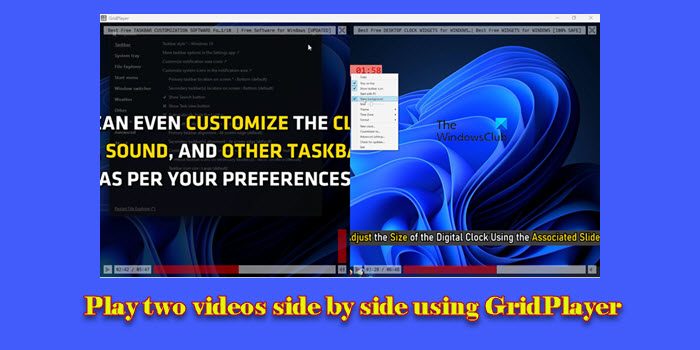
GridPlayer is a lightweight video player that lets you play multiple videos simultaneously in a grid-like arrangement. Unlike other complex media players, GridPlayer focuses on handling multiple video streams without putting a significant load on your computer, making it a simple and efficient tool for playing several videos at the same time.
Play two Videos Side by Side on Windows 11/10
Whether you want to compare different video clips or simultaneously monitor feeds from multiple cameras, GridPlayer can be an effective tool to play two videos side by side on a Windows PC. It not only lets you play the videos but also allows you to sync them with each other, maintaining the same position in the timeline throughout the playback.
Download and Install GridPlayer
To use GridPlayer, you need to first download and install the software from its official page on GitHub. Use this link to visit the page in your browser window and scroll down until you find the Installation section. You can download the software as an installer or in a portable version. Once downloaded, you can run the installer to set up GridPlayer on your system or simply extract and run the portable version without installation.
Play two videos side by side using GridPlayer
GridPlayer has a minimalistic grid-based interface that looks like the following when you launch the software:
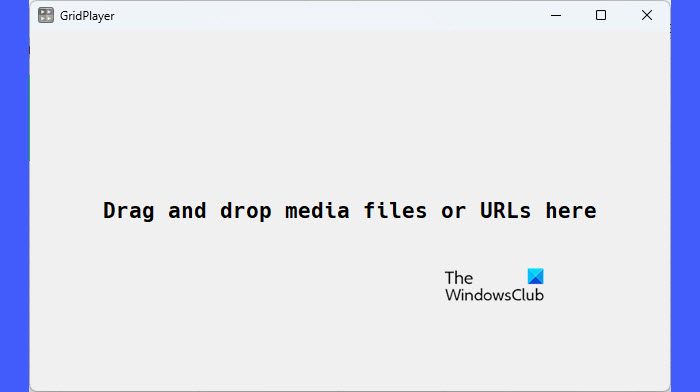
As you can see, you just need to drag and drop videos to play them side by side in GridPlayer. The videos will start playing as soon as you add them to the player’s interface. They will also automatically arrange themselves based on the player’s default configurations.
To manually add the videos, right-click anywhere on the player’s interface and select Add > Add Files. If you want to play online video streams, you can either drop their URLs on the player’s interface or right-click and select Add > Add URLs.
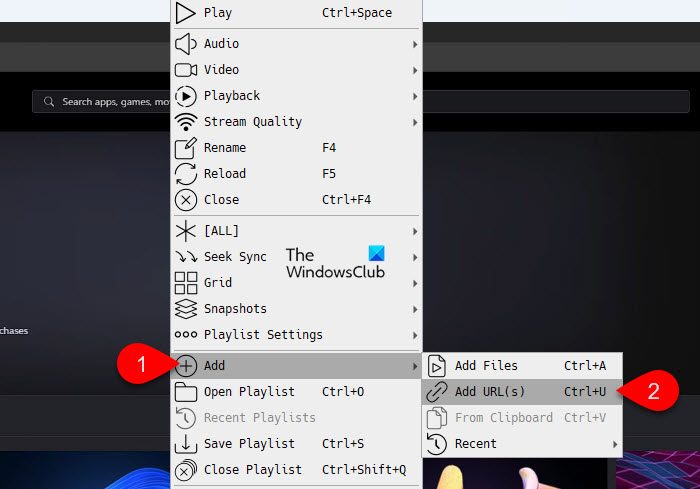
GridPlayer will resolve the URLs via streamlink and yt-dlp to play the videos side by side.
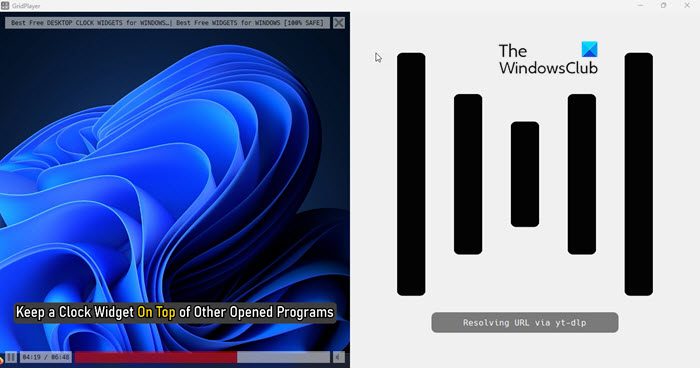
When you hover over a video, the seek bar shows you the video’s timeline. You can use this bar to jump to different points in the video (by dragging the slider to the desired position) or quickly find and play specific parts of the video.
You can also use the Snapshots feature to save up to 10 snapshots, which lets you jump to and play the video from different points in time. By default, the videos play in a loop.
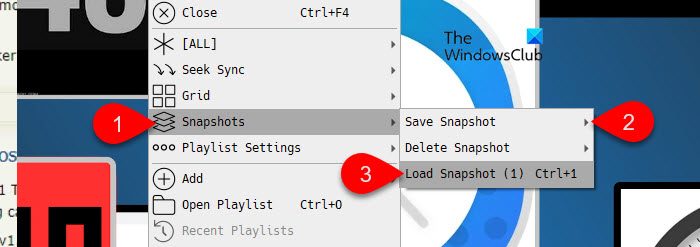
Zoom, Crop, Transform, Sync videos with GridPlayer
Apart from playing two videos side by side in GridPlayer, there’s lot more you can do. For example, you can zoom the videos in or out, crop the videos, change their aspect mode (fit, stretch, none), and transform them through rotation or flip at different angles. These options are available under the Video submenu in the right-click context menu of the GridPlayer.
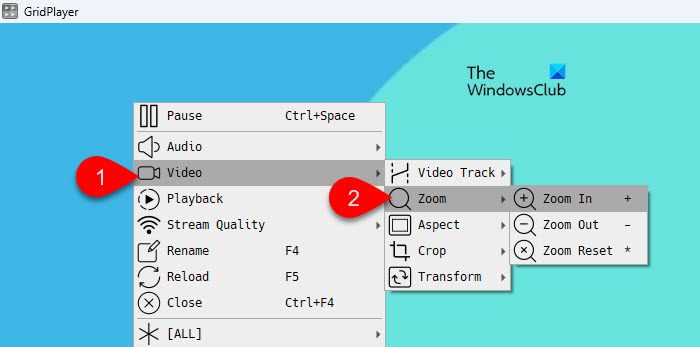
The Audio submenu lets you adjust the volume, change the audio mode, and mute/unmute the video.
The Playback submenu lets you change the video playback speed, jump to specific points in the video, and modify the loop settings.
The Grid submenu lets you change the layout of grid cells within the player (rows first, columns first, fit cells, etc.)
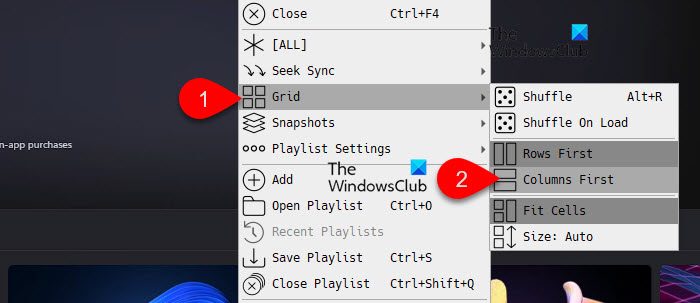
The Seek Sync submenu lets you synchronize the seek bar across multiple videos (by percentage or by timecode). When you seek a specific point in one video, all other videos playing in the grid will jump to the corresponding time position, ensuring they stay in sync. This is particularly useful when you want to watch different videos in parallel and keep them aligned at the same point in time.
The Save Playlist option allows you to save specific settings (like volume, loops, aspect ratio, etc.) for each video in the playlist. You can import the saved playlists later, restoring all the settings and video positions exactly as you configured them.
The Settings option opens a GridPlayer Settings window that lets you configure GridPlayer according to your preferences. There’s an Advanced option at the bottom of the window that shows Video Decoder settings. GridPlayer supports three video output modes: Hardware mode, which uses the GPU for high performance; Software mode, which relies solely on the CPU and may cause high CPU load with high-resolution videos; and Hardware SP mode, which decodes video within the same process as GridPlayer (Hardware SP mode is not recommended for more than 4-6 videos due to potential high CPU load and application freeze).
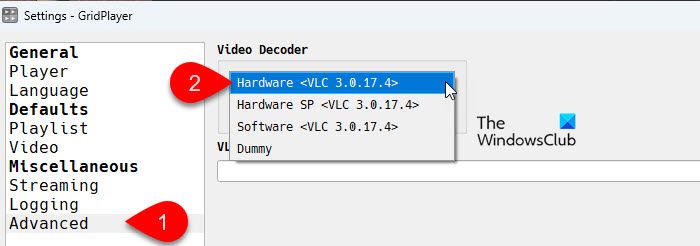
Similarly, you can explore other options/submenus to learn more about GridPlayer and its functionalities. To make it easier for you, we have listed some prominent features of GridPlayer in the next section.
Key Features of GridPlayer
Following are some of the key features of GridPlayer:
- Simple VLC-based media player with a configurable Grid layout
- Free and open-source
- Supports all video and audio formats (that VLC supports)
- Supports (almost) any streaming URLs ( resolves URLs with streamlink and yt-dlp)
- Supports hardware & software video decoding
- Lets you control video aspect, playback speed, and zoom level
- Lets you swap videos with drag-and-drop
- Lets you set loop fragments with frame precision
- Playlist preserves specific settings for each video (volume, playback speed, subtitle preferences, etc.) when saved
- Available in multiple languages
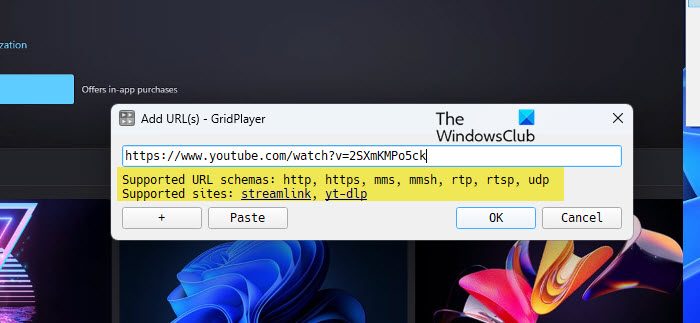
That’s it! I hope you find this useful.
Read: Fix Video Stuttering and Lagging issues in Windows.
How to play two videos at the same time on a laptop?
To play two videos at the same time on your laptop, launch two media player applications (like VLC, Windows Media Player, or any other preferred player) or two instances of the same application. Open the first video in the first media player and the second in the second. Resize and position the media player windows on your screen so they are side by side, and restart the video playbacks. Alternatively, you may use a specialized tool like GridPlayer to play two videos simultaneously within a single application.
How to play two videos side by side in VLC?
To play multiple videos on VLC Player, open VLC, click on Tools > Preferences > Interfaces, then uncheck the box that says — Allow only one instance. Click the Save button. Next, go to Media > Open Multiple Files. Add the first file, then click Show more options and check Play another media synchronously. Use the Extra media button to add the second file. Click Play to watch both media files simultaneously within a single control window.
Read Next: Span & Play video across multiple monitors on Windows.
Leave a Reply